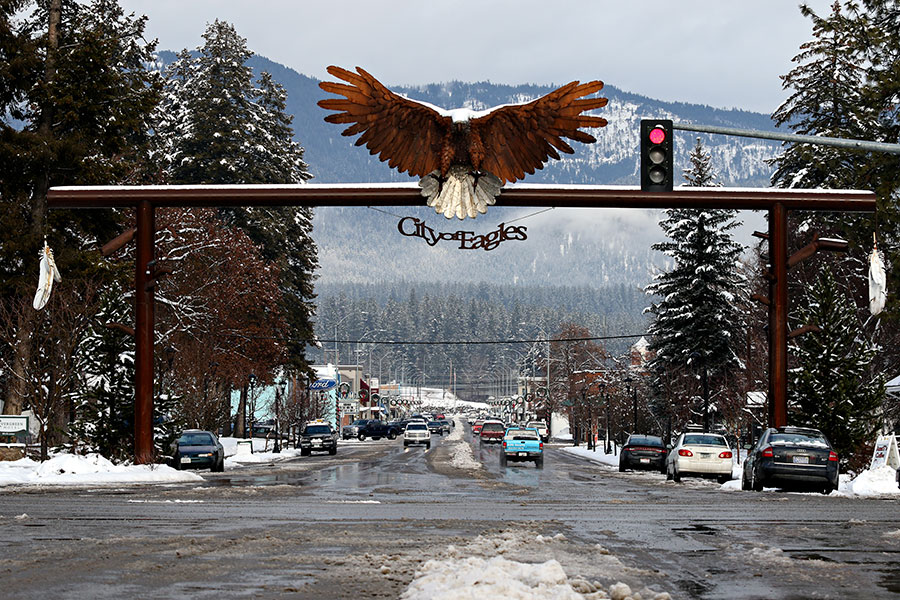In a unanimous decision, the Montana Supreme Court on Wednesday determined that BNSF Railway Company is not shielded from liability for its role in spreading asbestos-laden dust in the Northwest Montana town of Libby, where hundreds of people have died and thousands more are sick due to exposure.
Facing hundreds of asbestos-related damage claims stemming from the operations of a now-shuttered vermiculite mine and its alleged role in shipping contaminated materials across the country, BNSF appealed a January 2019 ruling by Montana Asbestos Claims Court Judge Amy Eddy, of Kalispell, who concluded the plaintiffs’ claims against BNSF are not preempted by federal law, as BNSF argued, and that the company is not exempt from liability.
BNSF appealed Eddy’s decision and asked the state Supreme Court to overturn it, with both parties delivering oral arguments last October.
According to Justice Jim Rice, who delivered the March 11 opinion, “BNSF is subject to strict liability because its actions in handling the asbestos constitute an abnormally dangerous activity.”
Two decades ago, the scope of asbestos exposure in Libby came to light when news reports detailed a link between the deadly fibers unearthed at a vermiculite mine operated by W.R. Grace and Co. between 1963 and 1990 and the hundreds of people who were sick and dying because of exposure to asbestos-laden dust.
Two of the diseases most commonly associated with asbestos — asbestosis and mesothelioma — have latency periods of up to 40 years, and people who were exposed to the asbestos dust continue to develop illnesses today.
Roger Sullivan, an attorney whose Kalispell law firm represents approximately 1,200 plaintiffs, most of them from Libby, said the railroad shouldn’t be blocked from liability for its role in spreading the asbestos-laden material through town from its rail yard.
In 2003, the U.S. Environmental Protection Agency — one year after placing the Libby site on the Superfund National Priorities List — released an “Initial Pollution Report” revealing that “asbestos-contaminated materials were hauled and shipped through the BNSF rail yard, and spilled into the soil for decades,” and that “asbestos … is present in soil, raw ore, ore-concentrate and other soil-like materials at various locations in and around the community including the BNSF rail yard.”
Plaintiffs Tracie Barnes and Kenneth Braaten, representing the estate of Rhonda R. Braaten, and Gerri Flores have brought claims against several defendants, including BNSF, due to their alleged involvement with the asbestos contamination in Libby.
The plaintiffs claimed negligence and common law strict liability against BNSF based on “decades of casting asbestos dust into the Libby community from the industrial level of activities at BNSF facilities.” In their complaint, Plaintiffs describe these industrial activities, including the transport of asbestos-containing vermiculite, the spillage of asbestos containing material along BSNF’s tracks and in its railyard, and the continued disruption of the built-up spilled asbestos by BNSF’s trains and workers.
BNSF argued that both the Federal Railroad Safety Act (FRSA) and the Hazardous Materials Transportation Act (HMTA) preempt the plaintiffs’ claims in the case.
The Montana Supreme Court disagreed.
“BNSF’s argument that its actions were not abnormally dangerous because they were conducted on railroads and in rail yards misses the point of this factor by failing to mention where the railroad and rail yard were located,” according to the court’s decision. “Indeed, it is especially relevant that BNSF’s rail yard was located in downtown Libby and its tracks ran through the town, where Plaintiffs, as citizens of Libby, are claiming they were injured by exposure to asbestos while conducting their daily activities.”
Sullivan said BNSF shouldn’t be allowed to sidestep its involvement in the spread of asbestos contamination.
“Our case is about the casting of toxic asbestos dust into the community of Libby from the rail yards, caused by a disturbance of the dust,” Sullivan told Justices during oral arguments. “That could be the wind, it could be the maintenance activities that the EPA describes, it could be the switching of cars in the rail yard.”
Sullivan said the state Asbestos Claims Court properly rejected the railroad’s attempts to shield itself from liability, and that the case should continue to trial to decide whether the railroad actions were harmful.
“This goes to the issue of causation,” he said. “That’s what the Asbestos Court has appropriately reserved for trial: The issue of causation and the issue of damages.”
